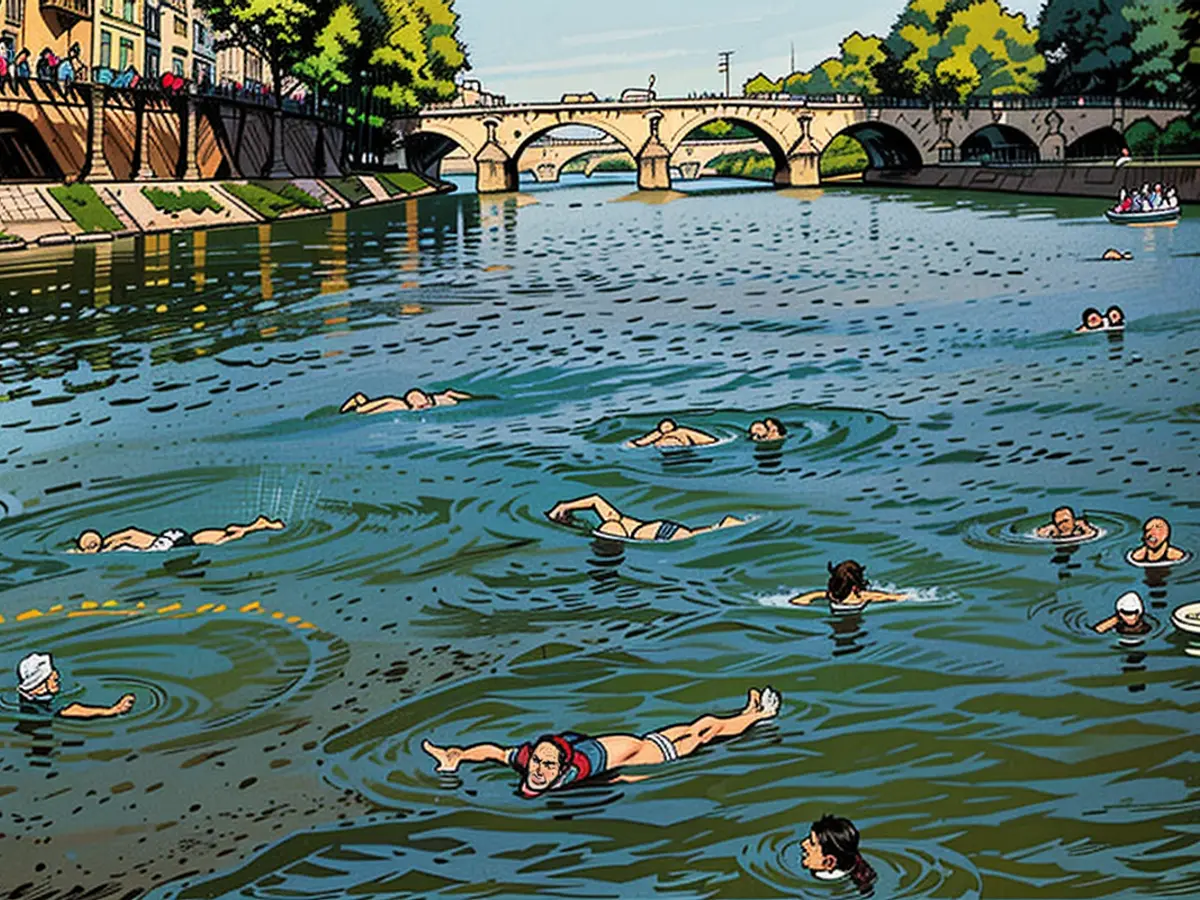Olympia 2024 - How does one actually clean a river?
With the promise "Saving the Seine," Paris Mayor Anne Hidalgo won the bid for the Olympics seven years ago and promised the citizens of her city that they would clean the Seine so well that swimming disciplines could take place in it. Since then, the city of Paris has invested over 1.4 billion Euros into the project.
But exactly how does one clean up such a large river? Why was the Seine so polluted in the first place? And can a cleaner river improve the quality of life in a city?
The Water Pollution Problem in the Parisian Seine
The canal system connected directly to the Seine is almost 250 years old. At that time, there were around one million people living in the city. Today, the city counts eleven times as many inhabitants. Due to the above-average and rapid growth, many households could not be connected to the canal system – a situation that still exists today. Additionally, the old canal system was not designed for the today common extreme weather conditions, adding to the city's challenges.
"During strong storms, the entire water was always directed into the river," explains Emmanuel Olivard, Chief Canal Worker in Paris, to ARD. Household and industrial wastewater, as well as rainwater, were all directed over the same canal system. The result: During heavy rainfall, the underground system was quickly overwhelmed, causing the canals to overflow. Unfiltered wastewater, including feces, chemicals, and other pollutants, flowed into the Seine. Contaminated water poses a risk for swimmers, as they can contract gastrointestinal, skin, or respiratory infections.
The 1.4 Billion Euro Project: How the Seine is being cleaned
Since the free swimming competitions of the Olympics are to take place in the Seine, the city now had to take measures to clean the river. For instance, it operates several clarification plants. The water is cleaned in several steps: Coarse solids are removed, sand and silt settle, microorganisms break down pollutants, and finally, the water is disinfected to kill bacteria.
Through new constructions and renovation projects, a modern canal system was installed, which separates rain and household water to reduce the load on the clarification plants. The connection of households and boats to the sewage system was especially important, as it significantly reduces direct wastewater discharge into the Seine. The city financially supported homeowners to lower the costs of connecting to the sewage system.
The project is groundbreaking, but even though Paris has already invested 1.4 billion Euros in the Seine's cleanup, the Olympics' water quality standards are not yet guaranteed. If it rains heavily, and too much wastewater enters the Seine, the Olympic water quality standards might not be met. For example, the triathlon would not be possible, and athletes would have to settle for a "duathlon" instead, according to Parisian authorities.
The problem of pollution is not French. According to the environmental agency, only eight percent of German rivers are in a good or very good ecological condition. One of these supposedly clean rivers is the Isar, which also flows through a metropolis. In Munich, people can swim carelessly in the Isar. In summer, it is one of the most important meeting points for Munich residents: they meet there, go swimming or surfing or let themselves be carried away by the gentle current. However, the Isar faces the same problem as the Seine. It must be permanently cleaned in order for swimmers to be able to swim in it safely.
Hartmut Keitel is the founder of the association "Deine Isar" and has been taking care of its maintenance for years. On his website, he writes that the Isar is now cleaner thanks to modern clarification techniques and usually has good water quality. He explains a similar clarification method, which is now also used at the Seine. He says: "The sewage goes through systems that inactivate colibacteria with UV light. This prevents illnesses from waterborne diseases if the water is accidentally swallowed."
Similar to the Seine in Paris, there is a fundamental problem in Munich: maintaining the cleanliness of the Isar during heavy rainfalls. Hartmut Keitel explains: "The clarification plants upstream have limited capacity." When too much water enters the sewage systems due to heavy rainfalls, the excess water must be diverted to the clarification and cleaning systems. The water cannot be filtered and purified properly, and according to Keitel, this can lead to a disruption of water quality.
Another example of the positive cleaning of a river is the Rhine. In the 1950s, the Rhine was considered one of the "great sewers of Europe." All authorities and industries tried various measures to improve water quality. With success. Nowadays, hardly any untreated sewage enters the Rhine. A series of monitoring stations constantly check the water quality.
In Basel, people especially enjoy the clean Rhine. Equipped with a waterproof bag (a waterproof sack), businessmen and women, among others, clean themselves out of their suits in the Rhine, store their expensive outfits in the bags, and let themselves be carried away by the current, enjoying the panorama, and get out of the river when they have reached their goal. They swim to work.
Both in Munich and in Basel, it has been achieved to integrate the city's rivers into daily life. The cleaning measures have long-term effects. Whether the Seine will be maintained beyond the Olympics is still open. If the measures were to take effect in Paris, the Seine could also establish itself as a swimmable river.
- To further ensure the water quality of the Seine, the city of Paris is considering installing more clarification plants like the ones already operational.
- The cleaning of the Isar, a river in Munich, has significantly improved over the years due to the use of modern clarification techniques, similar to those used in the Seine.
- Despite the ongoing efforts to clean the Seine, the Olympic Games' water quality standards might not be met during heavy rainfall, leading to potential alterations in swimming events like the triathlon.
- Hartmut Keitel, the founder of "Deine Isar," emphasizes the importance of maintaining the Isar's cleanliness even during heavy rainfall, as excess water can compromise the clarification and cleaning systems.
- The Rhine, once considered one of Europe's "great sewers," has seen a dramatic improvement in water quality due to various measures taken by authorities and industries over the decades.
- In the Olympic city of Munich, the Isar River is widely used for recreational activities like swimming and surfing, highlighting the potential of revitalized rivers to enhance city life.
- Anne Hidalgo's ambitious plan to transform the Seine into a swimmable river for the Paris Olympics has brought the issue of river cleaning into the spotlight, inspiring similar initiatives across the globe.
- Top-News headlines have documented the progress made in cleaning the Seine and other rivers, reflecting the global interest in preserving freshwater resources and promoting sustainable urban growth.
- The Olympia town of Munich and Basel on the Rhine have successfully integrated their rivers into everyday city life, demonstrating that cleaning initiatives can contribute to increased livability and community engagement.
- The city of Olympia, home to ancient Greek Olympian Games, could also benefit from investing in its waterway cleaning projects, bringing renewed appreciation to the historic site while promoting a more sustainable relationship with its natural resources.









